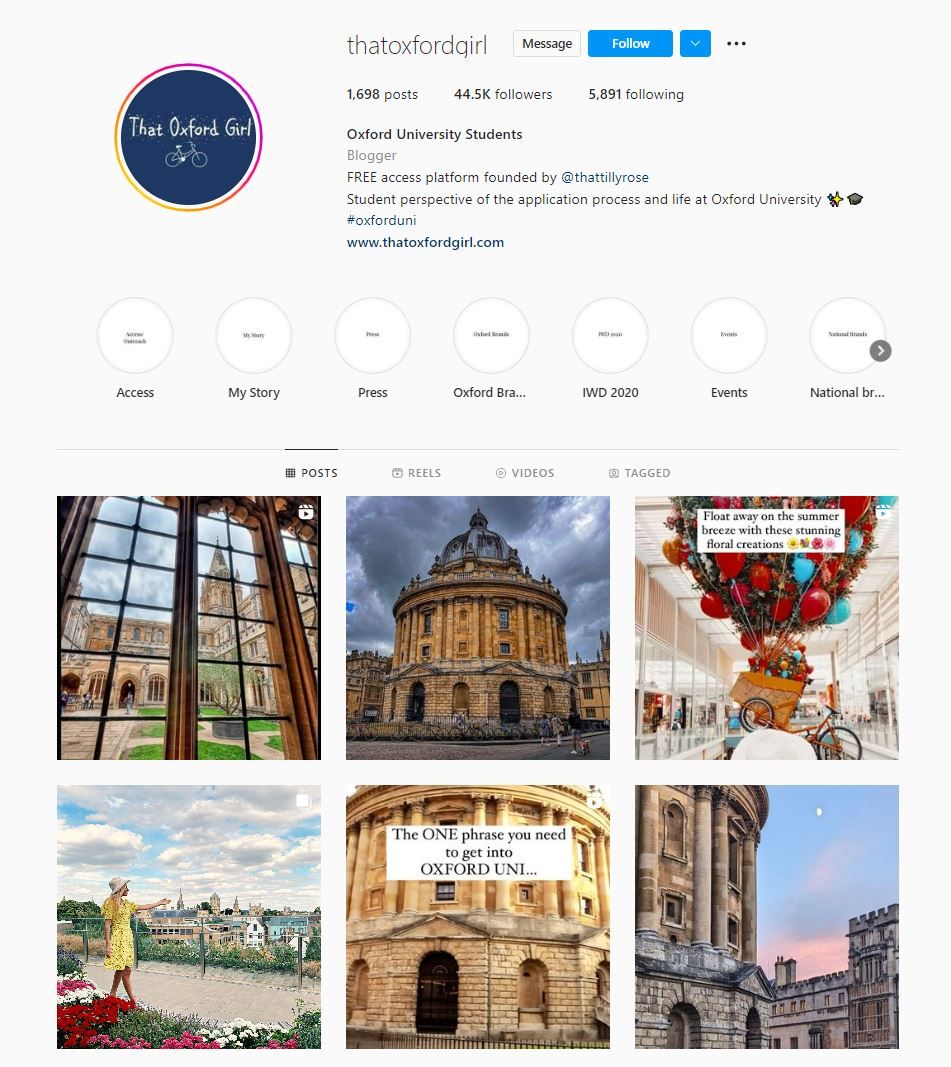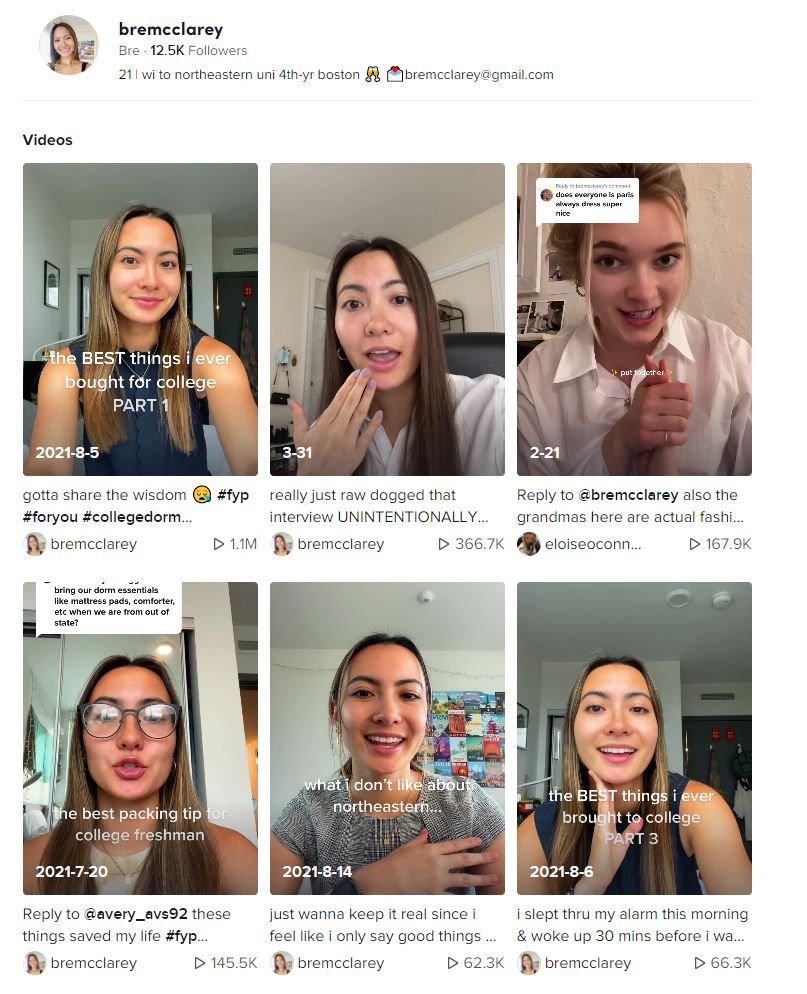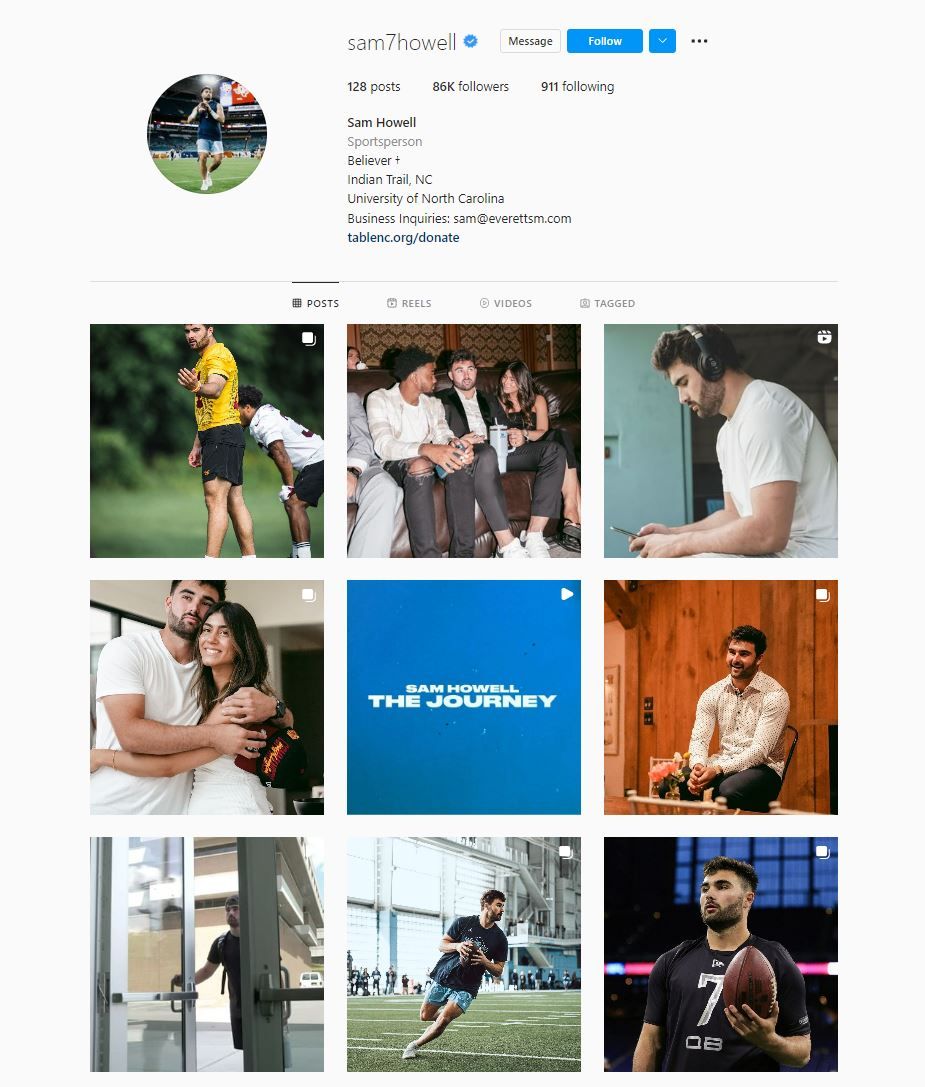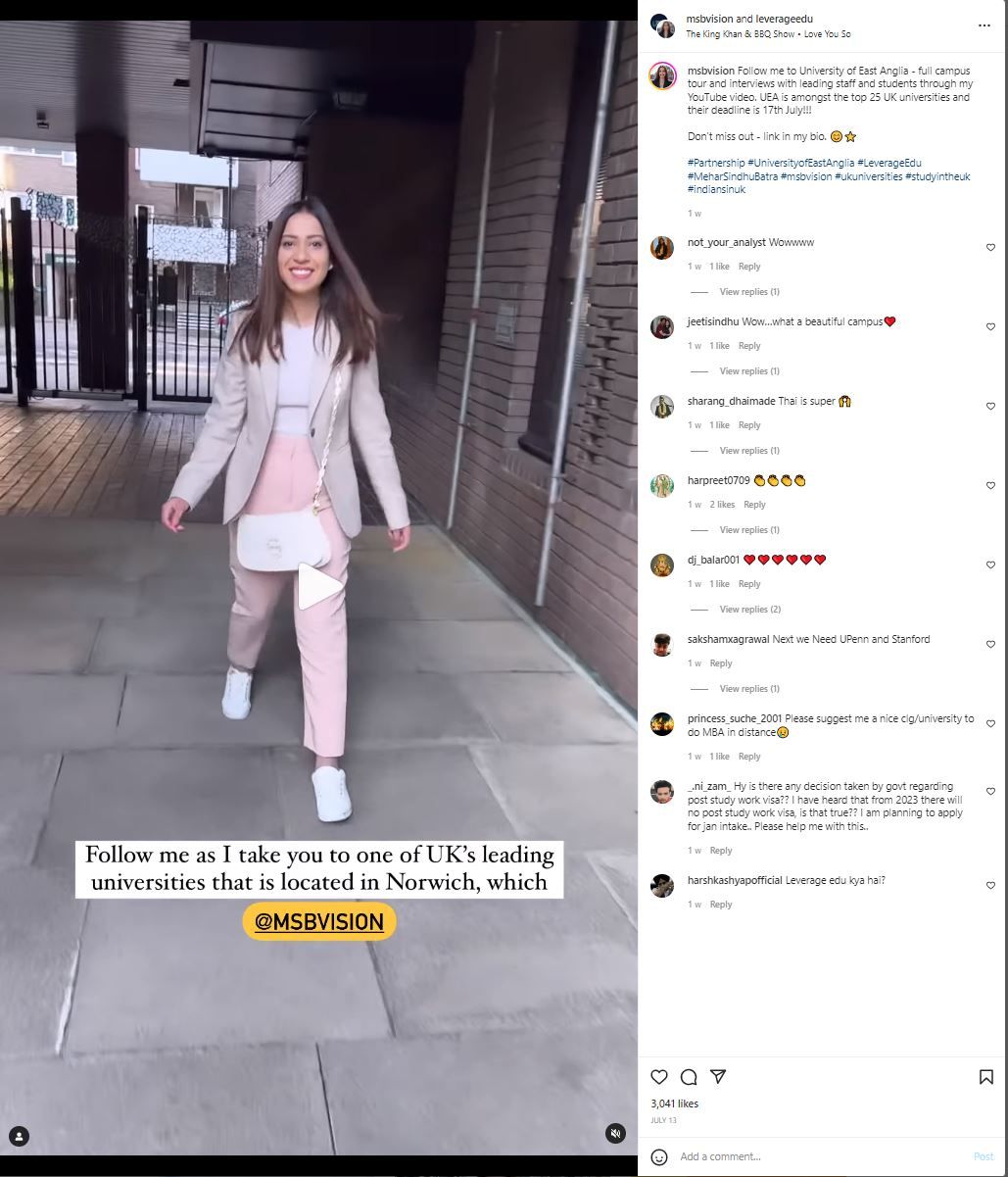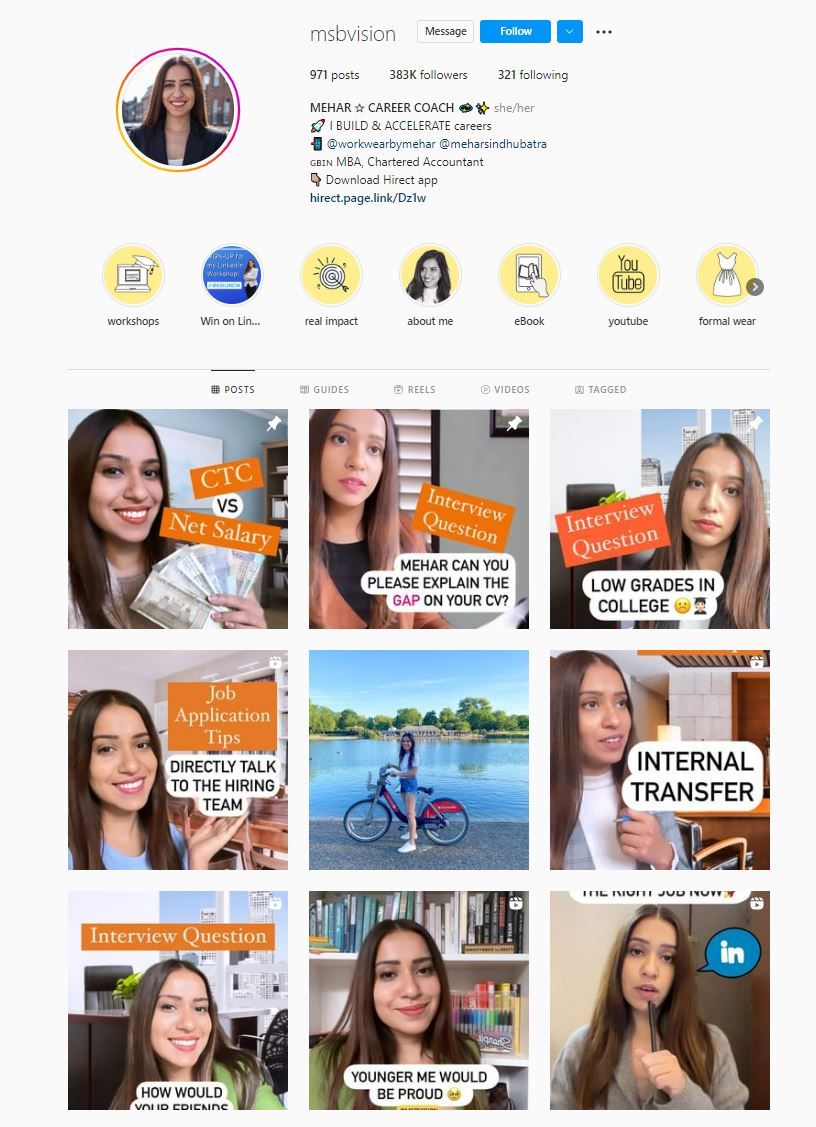Major influencers and celebrity endorsements on social media have long had a lucrative potential for brands (an estimated $10 billion industry), and there's been a big drive at many higher education institutions in recent years to tap into this potential.
But Gen Z consumers are growing increasingly skeptical about the marketing tactics of brands using big or celebrity influencers.
People are wising up to the amount of money social media stars make from promoting and endorsing products. Coupled with a saturated market, it's contributing to an increasing culture of ‘influencer fatigue' and distrust.
This is where the nano and micro influencers step in, proving that bigger followings are by no means better when it comes to connecting with audiences in a meaningful way.
There's been a shift towards working with these lower-level influencers over their more well-known and high-paid counterparts due to the authenticity and credibility they offer to audiences.
Micro and nano influencers often increase engagement and offer better conversion rates.
And the higher education sector is no different.
It's one of the industries where this approach can be the most meaningful, with so many potential micro and nano influencers on campus as well as industry professionals working in sectors of interest to potential recruits.
What are nano and micro influencers?
The parameters can vary, but nano influencers are widely regarded as having between 1,000 and 10,000 followers and are often in the early stages of growing an audience.
Meanwhile, micro influencers usually have a range of 10,000 to 100,000 followers.
What are the benefits of using influencers with a smaller following?
If an influencer has an audience that could include current students and potential recruits, it means that any content they share about your university will be seen by the right people.
Nano and micro influencers are both lower-cost alternatives to mega influencers, and they tend to have more credibility, so their voices are listened to. Their posts may not be as polished, but they're more authentic and trusted because of it.
Social media algorithms, seeking out those with the most genuine impact over followings in a cluttered creator space, also seem to favor student influencers.
Nano or micro student influencers have a network of like-minded followers, and they're more likely to engage with their audience over the big hitters, which adds additional value.
New social media app BeReal is even focusing on US colleges and ambassadors as part of its strategy.
There's so much potential in student nano and micro influencers, and platforms and agencies now exist to provide brands with the opportunity to put out messaging across a whole network of them.
They promise that hundreds or thousands of these trusted accounts working together can have a broader reach and deeper impact than just one costly social media star.
How universities and colleges can tap into the trend
Firstly, we have the benefits of using existing student or alums influencers, which we've explored before in this blog.
Some influencers have followings that take them way out of the nano/micro category, but most do fit into this group.
Many institutions, like the University of North Carolina in the US and the University of St Andrews in the UK, have established publicly visible ambassador programs to boost recruitment.
But student influencers differ from ambassadors in that they're more in control of their output and brand, delivering arguably more authentic content.
Takeovers of university accounts work well here. The influencer can reach potential students to build a following among them and then continues to post content from their own channels thereafter.
These student nano or micro influencers may already have a following among potential recruits with similar academic goals if they've gained popularity by posting about their studies.
Student journalists with strong followings on Twitter (because of university newspapers, for example) could help spread the messaging around the benefits of studying at that institution.
The Instagram account That Oxford Girl, launched by University of Oxford student Tilly Rose to help others navigate the application process, has nearly 40,000 followers. It's grown so much that there are 100 female students writing for the accompanying blog and several brand partnerships.
TikTok is also a breeding ground for nano and micro student influencers. An example is Northeastern University's Bre McClarey, who offers top college tips, such as freshman packing lists and guides to choosing student accommodation. She has more than 12,000 followers and millions of viewers of her videos.
Accounts like this, of which there are many more worldwide, not only have the potential to reach existing cohorts but also those aspiring or contemplating an application.
Another example is US college athletes.
While many have enormous followings with lucrative brand deals that push them into the major influencer category, more influencers have micro-level followings. These could help universities gain more exposure with content such as tours of sports facilities.
An example is Sam Howell, the University of North Carolina at Chapel Hill student and American football player. These types of influencers also offer big potential in terms of promoting and selling university merchandise to other students to boost funds.
But the appeal of nano and micro influencers isn't just restricted to existing students.
There's a whole world of personalities on social media with niche interests and young followers thinking about their study options.
Imagine a fashion micro influencer and their ability to promote a university specializing in textiles to their followers.
Or an archaeologist working in the field, with followers pondering a career in the industry.
Ask them to talk about pay scales, a day in the life of their work, or their training—and link to the relevant university or college program page.
There are also career coaches out there who prospective students look to for advice on interviews and securing college places.
With a following of more than 380,000, Mehar Sindhu Batra is a great example of this. The University of East Anglia recently invited her to tour the facilities to promote the institution, in partnership with Leverage Edu, a company helping students to study abroad, which she posted on her Instagram account @msbvision and on YouTube.
And there are many influencers in the studying abroad sphere, blogging about their adventures in the US or in Europe that universities and colleges can partner with to inspire recruitment in their respective home countries.
Then there's also the option of using companies that are aspirational to youngsters, such as big law firms or banks.
Tap into those social media accounts, and you could reach hundreds—if not thousands—of potential students.
The same is true for practically any sphere of influence. And social listening tools can help identify candidates and companies to focus on.
For a relatively low cost, universities and colleges can use these influencers to raise awareness of their institution in many ways, from sharing campus tours to something as simple as resharing content and reacting to it—a great way to revive and repurpose older videos and articles.
But it's important to be transparent about the influencers' backgrounds. Anglia Ruskin University in Cambridge in the UK landed itself in hot water in 2020 over using bloggers who implied they had studied there when they hadn't.
It's equally important to research the influencers to ensure they share your institution's values and strike the right tone.
Influencer marketing is evolving rapidly. Looking into the future, we may see virtual influencers in the metaverse.
Higher education marketing teams should consider looking into nano and micro influencers and incorporating them into their digital strategies.
How is your institution using influencers to sell the higher ed experience?
Have you seen any great examples of influencer marketing in higher education?
We'd love to hear your thoughts in the comments below or on social media.
 |
 |
 |
|---|

:format()//media/Are-nano-influencers-key-to-higher-ed-marketing---rq.png)
